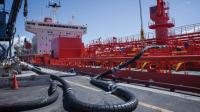Quebec counts on next-generation port

Quebec hopes a major maritime strategy that includes constructing a container port and building naval vessels will boost its economy by creating jobs and attracting investment.
The government of Quebec is implementing a maritime strategy that aims to create more than 30,000 direct jobs and encourage public and private investment of about C$9bn ($6.8bn) by 2030.
During the first five years of the strategy, the government plans to invest up to C$500m to improve infrastructure in the maritime sector, which is expected to generate 1500 jobs during the construction phase. The government also plans to strengthen Quebec’s economy – in particular the manufacturing sector – through the development of industrial port zones.
Cargo-handling and cruisers
The Port of Quebec is spending C$775m to create the most environmentally and technologically advanced cargo-handling facility in North America in a project called Laurentia. The Quebec Port Authority (QPA) has signed a long-term deal with global port operator Hutchison Ports and Canadian National Railway to develop the container terminal on Port of Quebec land on the north shore of the St Lawrence River. It will be the only inland terminal on the North American continent capable of handling the next generation of large cargo vessels.
“We couldn’t have hoped for a better scenario,” says Mario Girard, chief executive officer of the QPA. “The world’s largest terminal operator, in alliance with North America’s largest rail carrier, both choose Quebec City. This will make it one of the largest private non-residential projects ever built in Quebec City.”
Eric Ip, group managing director of Hutchison Ports, says: “With its fully intermodal deep-water port, its strategic location to reach the US Midwest market, and the strong support of local authorities, the Quebec City project has all the assets to succeed in this highly promising market.”
The Port of Quebec is also the first cruise ship destination on the St Lawrence River and Quebec City welcomed about 230,000 visitors from more than 30 cruise ships during 2018. Meanwhile, in July 2019, Davie shipyard – located on the St Lawrence River at Lauzon, close to Quebec City – won a C$500m, five-year contract from the federal government for maintenance work on the country’s fleet of 12 Halifax-class frigates (Seaspan Victoria Shipyards in British Columbia was awarded a similar contract). This is the biggest contract in Davie’s history.
On the research and innovation side, Quebec City is showing its credentials in the bio-marine and ocean tech space. Researchers at Laval University are using active ingredients in bio-marine products or by-products to maximise the nutritional value of foods and food products.
Applied research centres
Quebec's university is also the administrative home to Canadian research icebreaker CCGS Amundsen. The ship has been a major catalyst in revitalising Canadian Arctic science by giving Canadian researchers and their international collaborators unprecedented access to the Arctic Ocean. Its facilities and sophisticated pool of equipment make it a versatile research platform for scientists in the natural, health and social sciences along with their partners from government, industry and northern communities.
Furthermore, Merinov is Canada’s largest integrated centre for applied research in fishing, aquaculture and the processing and development of aquatic products. It has four centres spread throughout the Gaspé Peninsula, the Magdalen Islands and the North Shore, in the province of Quebec, and works closely with Laval University’s institute for nutrition and functional foods.
“The development of innovative fields and strong industries not only benefits Quebec’s economy, but it is also a great catalyst for the event industry,” says Ann Cantin, director of communication and marketing for Quebec City Business Destination, the official meeting and convention bureau for the Québec region.
“When our economy strives, the event industry follows. It is essential for all stakeholders from politics, businesses and R&D to work closely together to create the strongest ecosystem possible for meetings and conventions to flourish. This industry then generates economic impact that can lead to an even greater economic development. It truly is a virtuous circle,” she adds.

Global greenfield investment trends
Crossborder investment monitor
|
|
fDi Markets is the only online database tracking crossborder greenfield investment covering all sectors and countries worldwide. It provides real-time monitoring of investment projects, capital investment and job creation with powerful tools to track and profile companies investing overseas.
Corporate location benchmarking tool
fDi Benchmark is the only online tool to benchmark the competitiveness of countries and cities in over 50 sectors. Its comprehensive location data series covers the main cost and quality competitiveness indicators for over 300 locations around the world.
Research report
fDi Intelligence provides customised reports and data research which deliver vital business intelligence to corporations, investment promotion agencies, economic development organisations, consulting firms and research institutions.
Find out more.




